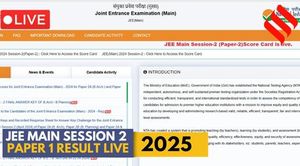On March 4, 2025, JR East announced the development of the next-generation Tohoku Shinkansen train, the E10 series, which is set to succeed the current E2 and E5 models. The new train is scheduled to begin commercial operations in the fiscal year 2030 after undergoing rigorous running tests starting from fiscal year 2027. This ambitious project marks the beginning of what many are calling the next era of Shinkansen technology.
Designed with modern engineering and passenger convenience at its core, the E10 series will consist of 10 cars and will reach maximum operating speeds of 320 km/h. This speed, combined with advanced technology, enhances passenger experience and responsiveness during travel. JR East has incorporated the latest earthquake countermeasure technologies, including L-shaped car guides to minimize derailment risk, and promises to reduce braking distance during emergencies by 15% compared to the existing E5 series.
"We are excited to bring the E10 series to life, incorporating cutting-edge safety features and ensuring our passengers can travel with the utmost comfort and efficiency," stated Yuji Fukasawa, President of JR East, during the announcement. The new trains will also distribute power outlets to all seats, meeting modern communication needs.
The E10 series not only focuses on speed and safety but aims to improve the passenger environment by introducing an enhanced variant of the existing 'TRAIN DESK' service. This service will adopt a 2+2 seating arrangement, allowing for spacious seating more conducive to work and study. Passengers can look forward to improved conditions including larger luggage storage areas.
Architecture and aesthetics have not been overlooked, with the exterior coloration drawing inspiration from the lush environments of the Tohoku region, featuring hues like 'Tsugaru green' for the upper section of the cars and 'Evening elm' for the lower section. Design elements include curvilinear lines reminiscent of cherry blossoms, which are meant to create fluidity and connection between the train's cars.
Perhaps the most groundbreaking aspect of the E10 series is its collaboration with tangerine, the first overseas design firm involved with JR East's Shinkansen design. This UK-based firm has partnered with global brands like Apple and Toyota, showcasing its expertise and innovative design philosophies. By incorporating ideas inspired by the natural scenery and architectures along the Tohoku line, the design team aims to represent not only functionality but also cultural identity.
"Our goal is to create not just a train, but a memorable experience for travelers, enveloping them within Japan's rich aesthetics and functional designs," the team at tangerine expressed.
Alongside the E10, JR East is also launching initiatives meant to diversify its operations, such as the introduction of cargo transport services. Beginning April 2025, JR East will implement dedicated cargo transport on the Shinkansen, converting some cars of existing E5 trains for weekly service between Shin-Aomori and Tokyo. This innovative step reflects JR East’s commitment to leveraging the Shinkansen infrastructure to create new revenue streams.
Fukasawa highlighted the potential of this venture: "By utilizing our Shinkansen for cargo transport, we aim to generate approximately 10 billion yen, demonstrating our adaptability to changing market demands. This is not just about passenger transport anymore, but optimizing our services to meet various needs."
The transition to dedicated cargo services will also see the conversion of an entire 7-car E3 series train, enabling regular transport of up to approximately 1,000 boxes between Morioka and Tokyo. This ambitious effort exemplifies JR East’s forward-thinking approach and readiness to expand beyond traditional passenger services.
Interestingly, the decision to label the new series as E10—skipping the E9 designation—comes from the prior use of the number 9 for inspection and test trains like the E926 'East i' and E956 'ALFA-X.' Such historical approaches to nomenclature demonstrate JR East's commitment to maintaining consistency and clarity within its operations. By avoiding the E9 designation, the company avoids overlap with previous systems and aligns with contemporary Shinkansen models.
The forthcoming E10 trains look set to include innovative features, such as equipment supporting smart maintenance to monitor and react to the trains' conditions, increasing reliability and service availability. Further, JR East is actively developing elements aimed at sustainability, recognizing the growing need for environmentally conscious public transit solutions.
With the Hokkaido Shinkansen set to open soon, the E10 series will also play a role, assuming its design will inform future models for operational use on these expanded routes. Such long-term planning exemplifies JR East's strategic thinking as it navigates advancements within the rail sector.
Overall, the E10 series embodies JR East's commitment to innovation, safety, and passenger engagement, paving the way for the future of high-speed rail travel. It stands as not only a tribute to Japanese engineering prowess but also as a beacon of modernity and environmental consciousness, ensuring the Shinkansen remains at the forefront of rail travel globally.



